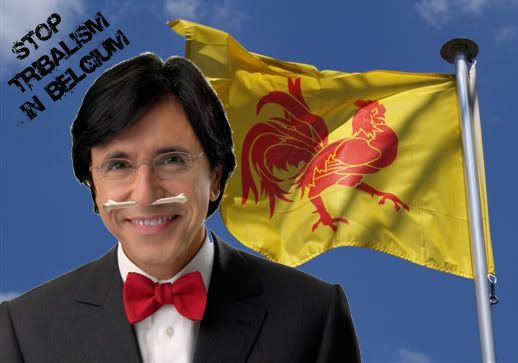For nation-building in the sense of enhancing the capacity of state institutions, building state-society relations, and also external interventions see State-building
Nation-building refers to the process of constructing or structuring a national identity using the power of the state. This process aims at the unification of the people within the state so that it remains politically stable and viable in the long run. Nation-building can involve the use of propaganda or major infrastructure development to foster social harmony and economic growth.
Originally, nation-building referred to the efforts of newly-independent nations, notably the nations of Africa, to reshape colonial territories that had been carved out by colonial powers without regard to ethnic or other boundaries. These reformed states would then become viable and coherent national entities.
Nation-building included the creation of national paraphernalia such as flags, anthems, national days, national stadiums, national airlines, national languages, and national myths. At a deeper level, national identity needed to be deliberately constructed by molding different groups into a nation, especially since colonialism had used divide and rule tactics to maintain its domination.
However, many new states were plagued by “tribalism“, rivalry between ethnic groups within the nation. This sometimes resulted in their near-disintegration, such as the attempt by Biafra to secede from Nigeria in 1970, or the continuing demand of the Somali people in the Ogaden region of Ethiopia for complete independence. In Asia, the disintegration of India into Pakistan and Bangladesh is another example where ethnic differences, aided by geographic distance, tore apart a post-colonial state. The Rwandan genocide as well as the recurrent problems experienced by the Sudan can also be related to a lack of ethnic, religious, or racial cohesion within the nation. It has often proved difficult to unite states with similar ethnic but different colonial backgrounds. Whereas successful examples like Cameroon do exist, failures like Senegambia Confederation demonstrate the problems of uniting Francophone and Anglophone territories.
Traditionally there has been some confusion between the use of the term nation-building and that of state-building (the terms are sometimes used interchangeably in North America). Both have fairly narrow and different definitions in political science, the former referring to national identity, the latter to the institutions of the state. The debate has been clouded further by the existence of two very difference schools of thinking on state-building. The first (prevalent in the media) portrays state-building as an interventionist action by foreign countries. The second (more academic in origin and increasingly accepted by international institutions) sees state-building as an indigenous process.
<State structures within the concept of state-building.>
The term “state” can be used to mean both a geographic sovereign political entity with a permanent population, a defined territory, a government, and the capacity to enter into relations with the other states, as defined under international law (Montevideo Convention on the Rights and Duties of States, December 26, 1933, Article 1), as well as a set of social institutions claiming a monopoly of the legitimate use of force within a given territory (Max Weber, 1919).
For the purposes of state-building in environments of instability, the sub-structures of states can be defined as a political regime (or system of government), a governance framework (or constitution), and a set of state institutions (or organizations) such as the armed forces, the parliament, and the justice system. State capacity refers to the strength and capability of the state institutions. Nation conventionally refers to the population itself, as united by identity, history, culture and language.
For a discussion of the definitional issues, see state-building and the papers by Whaites, CPC/IPA or ODI cited below.
The confusion over terminology has meant that more recently, nation-building has come to be used in a completely different context, with reference to what has been succinctly described by its proponents as “the use of armed force in the aftermath of a conflict to underpin an enduring transition to democracy.” In this sense nation-building, better referred to as state building, describes deliberate efforts by a foreign power to construct or install the institutions of a national government, according to a model that may be more familiar to the foreign power but is often considered foreign and even destabilising. In this sense, state-building is typically characterised by massive investment, military occupation, transitional government, and the use of propaganda to communicate governmental policy.
– APPARENTLY BELGIUM GOING THE WRONG WAY ROUND JET AGAIN –
From Wikipedia, the free encyclopedia


